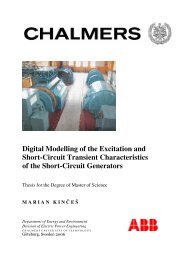Modeling and Simulation of Vehicular Power Systems - webfiles its ...
Modeling and Simulation of Vehicular Power Systems - webfiles its ...
Modeling and Simulation of Vehicular Power Systems - webfiles its ...
Create successful ePaper yourself
Turn your PDF publications into a flip-book with our unique Google optimized e-Paper software.
1 IntroductionNowadays electric <strong>and</strong> hybrid vehicles are being more <strong>and</strong> more placed in the center <strong>of</strong>attraction because <strong>of</strong> the importance <strong>of</strong> shortage in fossil fuels. As simulation <strong>and</strong>modeling <strong>of</strong> different hybrid <strong>and</strong> electric vehicles plays an important role before thedesign <strong>and</strong> manufacturing process, having a simulation environment which includesdifferent models for components used in drive train could be really beneficial [8].To havea good simulation environment, it is needed to make a library <strong>of</strong> models <strong>of</strong> componentsexist in the drive train <strong>of</strong> vehicles. There are so many simulation programs being used forstudy <strong>and</strong> analysis <strong>of</strong> different drive trains [8], [6]. Different components in the drivetrain <strong>of</strong> hybrid vehicles are modeled with different methods [7], [8], [1], [4].Theimportance <strong>and</strong> benefit <strong>of</strong> having a simulation environment is discussed in [5], [22].In[15] some methods to model internal combustion engines is discussed. In [17], [18], [23],[24], different methods to simulate batteries is given <strong>and</strong> discussed. The energymanagement <strong>and</strong> control strategies used in hybrid drive trains is presented in [14].In [1],[2], [3], [7], [9] some methods for modeling <strong>of</strong> electric machines are given. As the wholedrive train <strong>of</strong> hybrid vehicles is a combination <strong>of</strong> electric <strong>and</strong> mechanical components,the dynamic modeling <strong>of</strong> the vehicle <strong>and</strong> mechanical parts is in the aspect <strong>of</strong> interest. In[4], [8], [10], [11], [12] <strong>and</strong> [13], the dynamics <strong>of</strong> the vehicles <strong>and</strong> how to model it isdiscussed.1.1 Objective <strong>of</strong> the thesisThe purpose <strong>of</strong> this thesis is to provide some tools <strong>and</strong> methods for modeling <strong>and</strong>simulation <strong>of</strong> components used in drive trains <strong>of</strong> hybrid vehicles. A goal is to introduceprinciples <strong>of</strong> simulation <strong>and</strong> the methods used for simulation <strong>of</strong> vehicular power systems.It is desired to create a simulation model for different components used in vehicle drivetrain. Different methods used to model vehicle dynamics, batteries <strong>and</strong> electric motors,engine is given. Altogether making a simulation environment to show the importance <strong>of</strong>modeling <strong>and</strong> simulation <strong>of</strong> vehicular power systems is one <strong>of</strong> the main objectives <strong>of</strong> thisthesis.1.2 Thesis outlineThis thesis is arranged in nine chapters. The first chapter, which constitutes theintroduction, provides the aim <strong>and</strong> scope <strong>of</strong> the thesis <strong>and</strong> what is done to accomplish theaims.Chapter 2 includes some theoretical background <strong>of</strong> hybrid vehicles <strong>and</strong> clarifies theimportance <strong>of</strong> simulation <strong>and</strong> modeling <strong>of</strong> vehicular power systems.Chapter 3 focuses on the basic <strong>and</strong> principles <strong>of</strong> simulation <strong>and</strong> modeling. Somesimulation tools which are used for vehicles simulations <strong>and</strong> comparison <strong>of</strong> them isgiven.1


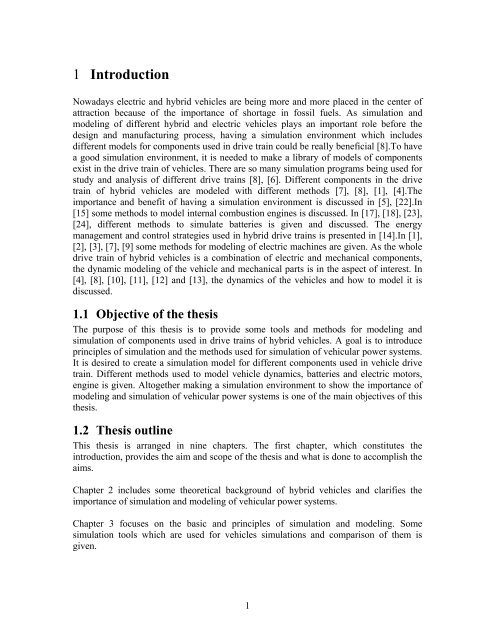

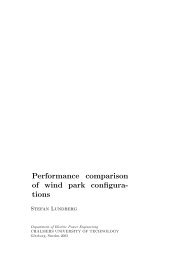
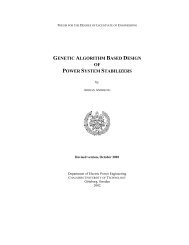



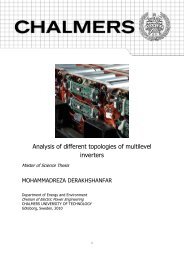

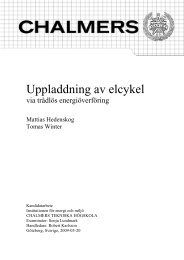
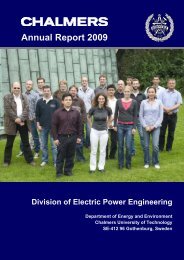
![LAPLACE OPERATOR.ppt [Lecture seule]](https://img.yumpu.com/42909900/1/190x135/laplace-operatorppt-lecture-seule.jpg?quality=85)

